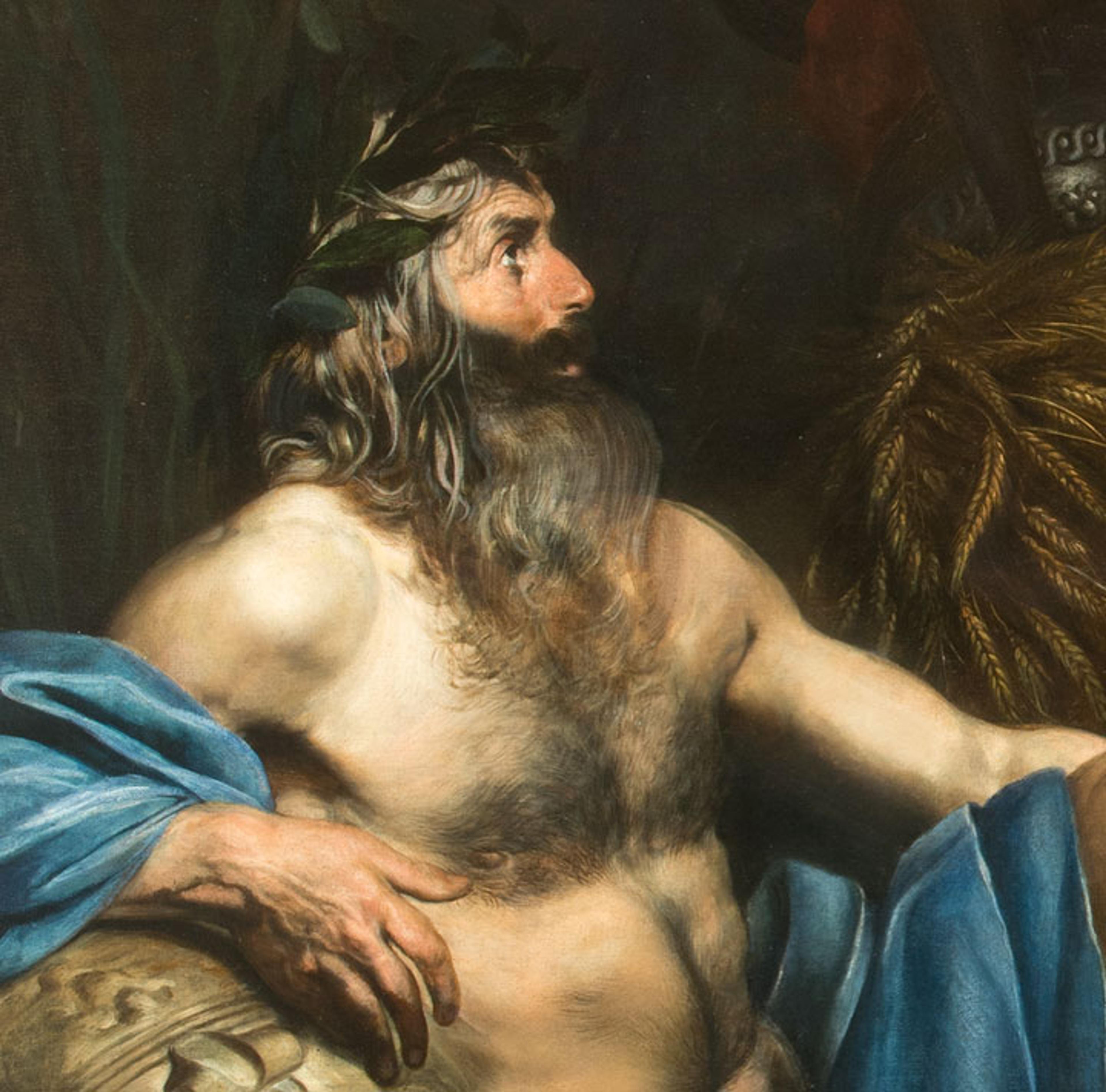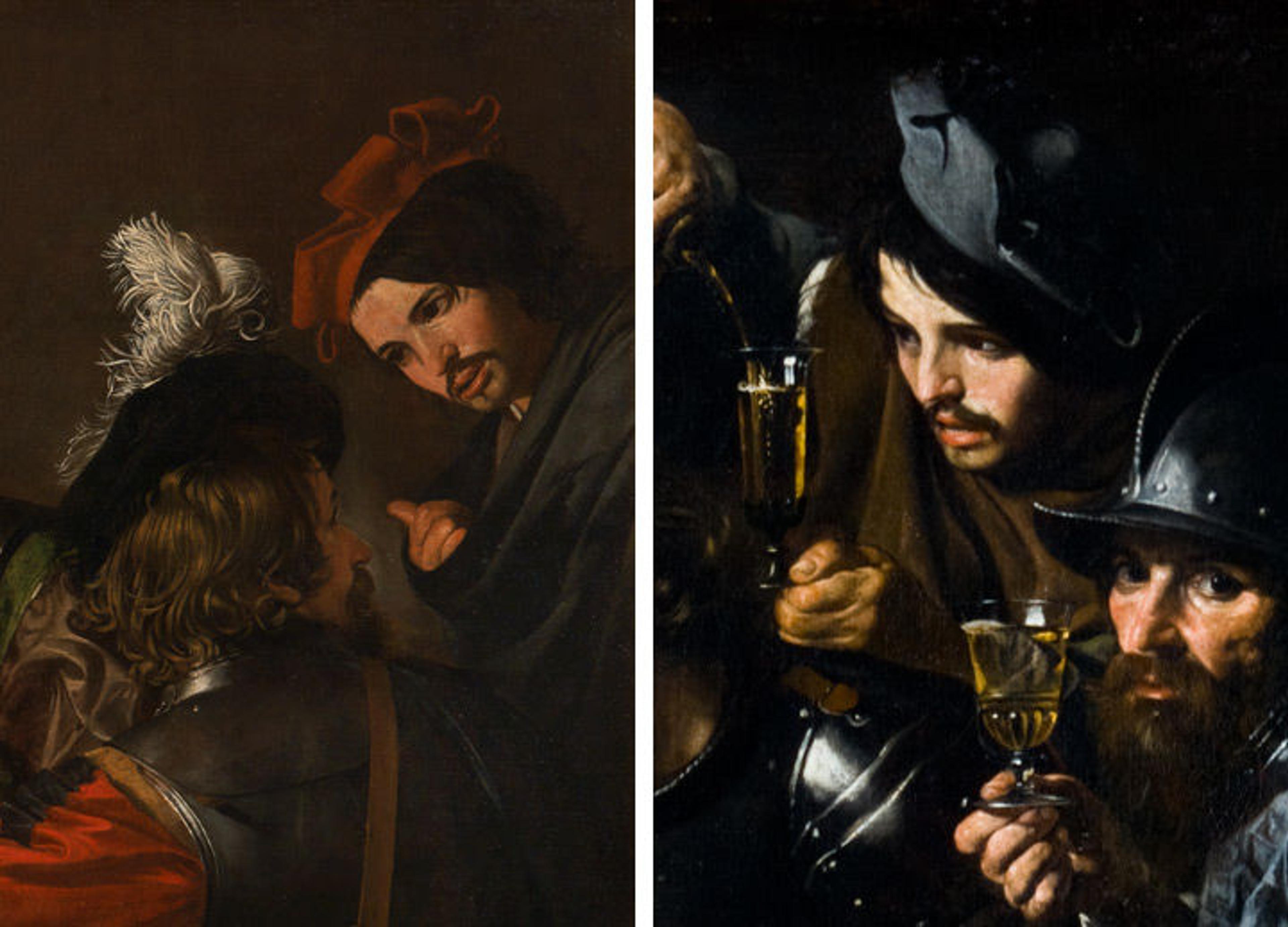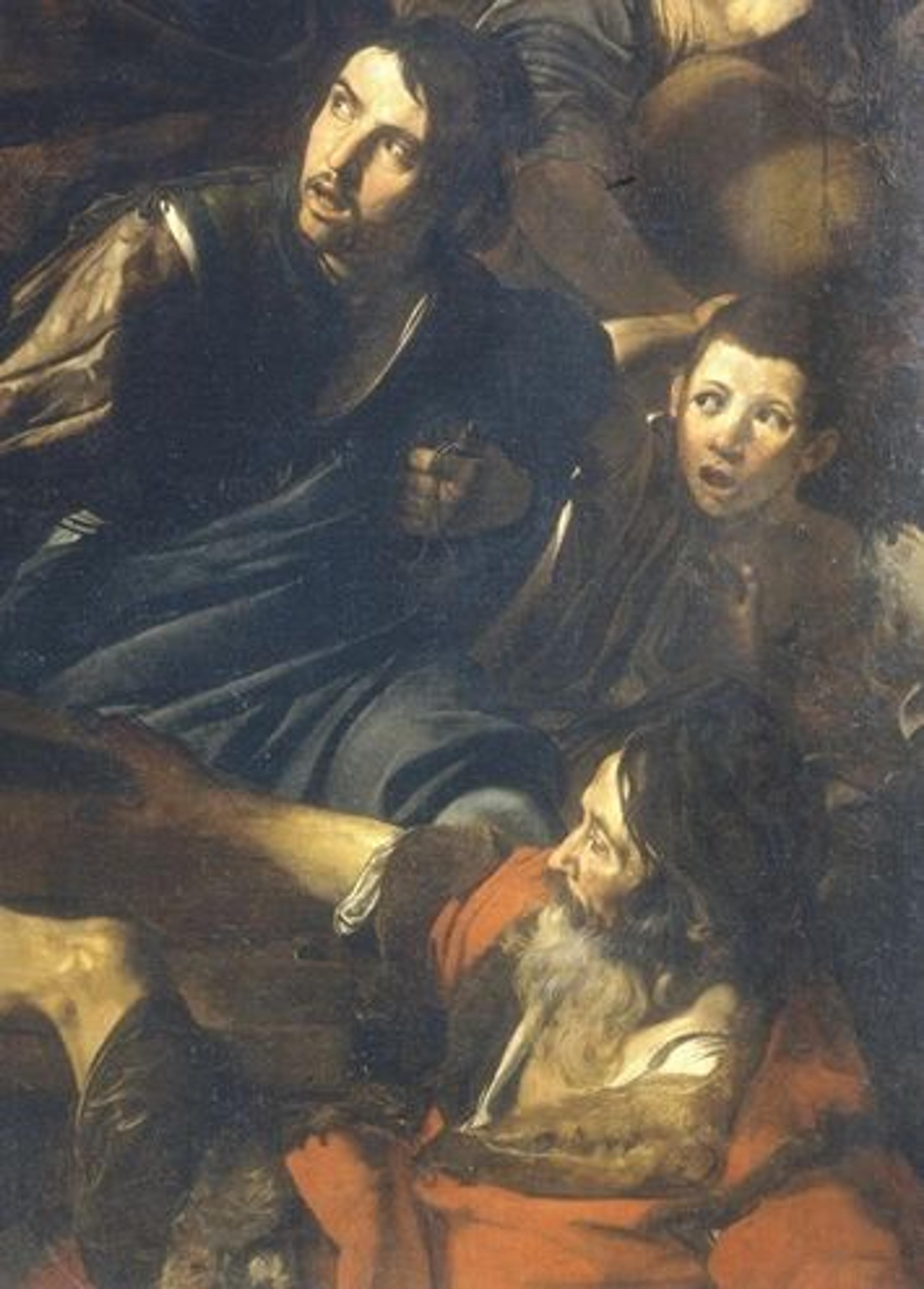
Valentin de Boulogne (French, 1591–1632). Allegory of Italy (detail of the river god of Tiber), 1628–29. Oil on canvas, 129 15/16 in. x 96 7/16 in. (330 x 245 cm). Villa Lante al Gianicolo, Institutum Romanum Finlandiae, Rome
«Maybe you haven't thought about it before, but you will as you move through the exhibition Valentin de Boulogne: Beyond Caravaggio: those faces that reappear in picture after picture are the faces of real people who modeled repeatedly for Valentin. They were not professional models; rather, they came from different walks of life and modeled for him to pick up some money or even perhaps a free lunch.»
From the critical literature as well as court documents of the period, we occasionally get a glimpse at who these people were and the artists with whom they worked. For instance, we know that, in 1613, Bartolomeo Manfredi was reimbursed for the cost of hiring a youth and a woman to model for his depiction of the punishment of Cupid. And then there is Giovanni Molli, a 73-year-old pilgrim from Palermo who modeled for a figure of Saint Jerome for the painter Orazio Gentileschi.
Valentin had a stable of favorite models. In the time around 1620, one of his favorites was a young man with clean features and a smart mustache. He is often the face in the crowd who attracts attention with his good looks, bringing us into the picture. We see him watching soldiers gamble in Denial of Saint Peter, and again in a scene of fortune-telling.

Left: Valentin de Boulogne (French, 1591–1632). Denial of Saint Peter (detail), ca. 1615–17. Oil on canvas, 67 1/2 x 94 7/8 in. (171.5 x 241 cm). Fondazione di Studi di Storia dell'Arte Roberto Longhi, Florence. Right: Valentin de Boulogne (French, 1591–1632). Fortune-Teller with Soldiers (detail), ca. 1618–20. Oil on canvas, 58 7/8 x 93 7/8 in. (149.5 x 238.5 cm). Toledo Museum of Art, Purchased with funds from the Libbey Endowment, Gift of Edward Drummond Libbey
He also appears in the below detail from Christ Driving the Merchants from the Temple, his mouth open, looking back as he flees the wrath of Jesus chasing the merchants from the Temple. In the right foreground of that same painting, appearing to literally fall out of the picture and into our space, is a bearded man with an aquiline nose and dignified features. He is about 60 years old, I'd say, and Valentin found his features perfect for a number of roles.
Left: Valentin de Boulogne (French, 1591–1632). Christ Driving the Merchants from the Temple (detail), ca. 1618–22. Oil on canvas, 76 3/4 in. x 8 ft. 6 3/8 in. (195 x 260 cm). Galleria Nazionale d'Arte Antica, Palazzo Barberini, Rome

He is the evangelist Mathew, the slumbering Saint Joseph approached by an angel, one of the apostles at the Last Supper, the Old Testament patriarch Abraham, the player of a bass viol and—unforgettably—the astonishing hairy-chested figure impersonating the river god of the Tiber in Valentin's Allegory of Italy (shown at the top of this post). If only we knew his name so that he could step out of anonymity and into the spotlight!

Clockwise from top left: Valentin de Boulogne (French, 1591–1632). Saint Matthew (detail), ca. 1624–26. Oil on canvas, 47 1/4 x 57 1/2 in. (120 x 146 cm). Musée National des Châteaux de Versailles et de Trianon. Valentin de Boulogne (French, 1591–1632). Dream of Saint Joseph (detail), ca. 1624–26. Oil on canvas, 44 7/8 x 36 1/4 in. (114 x 92 cm). Private collection. Valentin de Boulogne (French, 1591–1632). Last Supper (detail), ca. 1625–26. Oil on canvas, 54 3/4 x 90 9/16 in. (139 x 230 cm). Galleria Nazionale d'Arte Antica, Palazzo Barberini, Rome. Valentin de Boulogne (French, 1591–1632). Abraham Sacrificing Isaac (detail), ca. 1629–32. Oil on canvas, 58 3/4 x 73 1/4 in. (149.2 x 186.1 cm). The Montreal Museum of Fine Arts, Gift of Lord Strathcona and family. Valentin de Boulogne (French, 1591–1632). A Musical Company with a Fortune-Teller (detail), 1631. Oil on canvas, 74 13/16 x 105 1/8 in. (190 x 267 cm). Liechtenstein, The Princely Collections, Vaduz and Vienna
Valentin's paintings can have the allure of a BBC production in which one watches the same actors take on widely various roles. It's what I call painting as the theater of life. Today, Valentin would have been a master cinematographer. Be sure to see the cinematic scope of this great artist's work before Valentin de Boulogne: Beyond Caravaggio closes on January 22.
Related Links
Valentin de Boulogne: Beyond Caravaggio, on view at The Met Fifth Avenue through January 22, 2017
